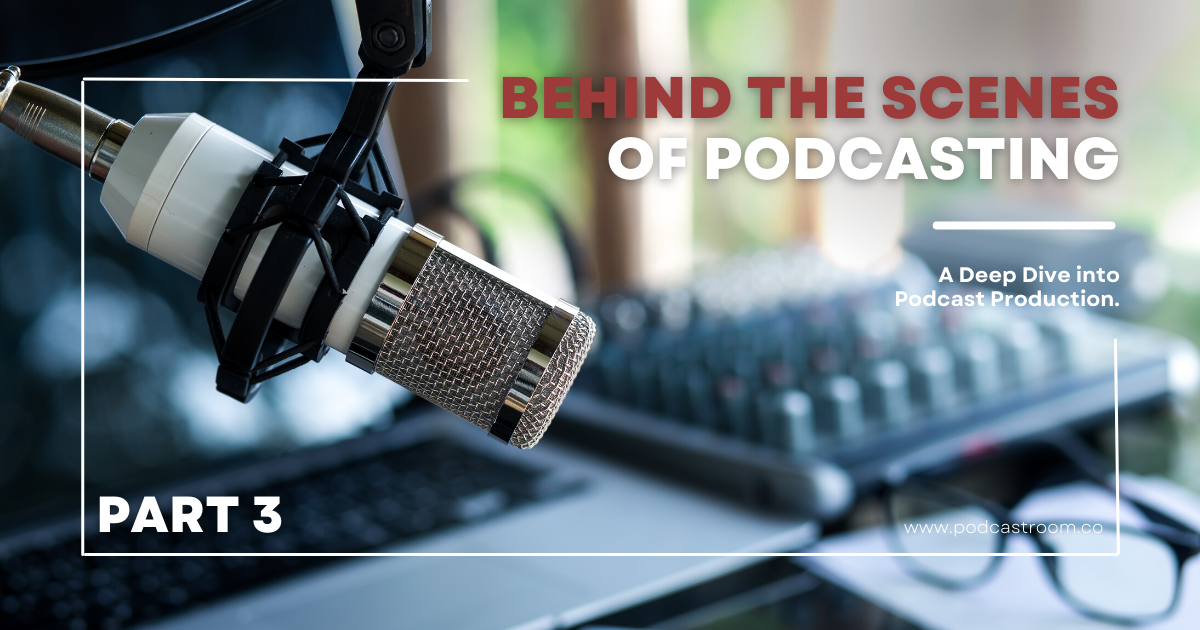When diving into the world of podcasting, understanding and investing in the right podcasting equipment is paramount. As the podcasting industry becomes more competitive, ensuring top-notch sound quality can significantly distinguish your content from the masses. Let’s explore the equipment, software, and essentials that can elevate your podcasting game.
Microphones: The Voice of Your Podcast
The quality of your podcast is significantly influenced by the type of microphone you use. A microphone is not just a tool; it’s the bridge between your voice and your audience. Therefore, ensuring you have the right microphone is crucial for delivering clear and professional-sounding content. Let’s delve deeper into the world of microphones and understand their importance in podcasting.
The Importance of a Good Microphone: A microphone’s primary role in podcasting is to capture your voice and convert it into an electronic signal. The clarity, depth, and warmth of that signal can vary greatly depending on the microphone’s quality. A subpar microphone can introduce noise, distort your voice, or fail to capture the full richness of your tone. Hence, investing in a good microphone is not just a luxury but a necessity for serious podcasters.
USB Microphones: The Beginner’s Choice
- User-Friendly: USB microphones are essentially plug-and-play. You don’t need specialized equipment or software to start recording. Just plug it into your computer, and you’re good to go.
- Affordability: Generally, USB microphones are more budget-friendly, making them an attractive option for those just starting out in podcasting.
- Popular Brands: Companies like Audio-Technica and Blue Yeti have made a name for themselves in this space. Their microphones are known for delivering decent quality at an affordable price point.
XLR Microphones: The Professional’s Preference
- Superior Sound Quality: XLR microphones tend to offer better sound quality, capturing audio in its most authentic form.
- Requires Additional Equipment: To use an XLR microphone, you’ll need an audio interface. This device connects the microphone to your computer and often provides additional controls for fine-tuning the audio.
- Finer Adjustments: With an audio interface, podcasters can make more precise adjustments to their sound, ensuring the best possible audio output.
Dynamic vs. Condenser: Understanding the Difference
- Dynamic Microphones:
- Durability: These microphones are known for their robustness. They can handle rough use and are less prone to damage.
- Noise Reduction: Dynamic microphones are less sensitive to ambient noise, making them perfect for noisier environments or live recordings.
- Condenser Microphones:
- Sensitivity: These microphones capture a wider range of frequencies, resulting in richer and more detailed sound.
- Ideal Setting: Due to their sensitivity, condenser microphones are best used in controlled studio environments where background noise can be minimized.
Headphones: Listening with Precision
In the world of audio recording, headphones play an indispensable role. They’re not just devices that let you listen to music or podcasts; they’re critical tools that ensure the quality and consistency of audio recordings. Let’s explore the significance of headphones in the recording process and understand the nuances of different types.
The Role of Headphones in Recording: Headphones allow you to monitor audio recordings in real-time. This immediate feedback is essential for several reasons:
- Quality Control: By listening as you record, you can instantly detect and rectify any issues, such as unwanted noise, distortion, or volume inconsistencies.
- Performance Enhancement: For vocalists and podcasters, hearing oneself can help in modulating voice, ensuring the right pitch, tone, and emotion are conveyed.
Closed-Back Headphones: The Gold Standard for Recording
- Sound Isolation: Closed-back headphones are designed with solid ear cups that prevent external sounds from entering your ears. This design ensures that you hear only the audio you’re monitoring, free from external disturbances.
- Preventing Sound Leakage: One of the significant advantages of closed-back headphones is that they prevent sound from leaking out. This is crucial during recording sessions, especially when using a microphone, as it ensures that the audio from the headphones doesn’t get picked up by the mic, which could cause feedback or unwanted noise.
Over-Ear vs. In-Ear: A Matter of Comfort and Preference
- Over-Ear Headphones:
- Superior Isolation: Due to their larger size and design that encompasses the entire ear, over-ear headphones generally provide better sound isolation. This makes them ideal for studio settings where maximum sound isolation is desired.
- Comfort: Many people find over-ear headphones comfortable for extended periods due to their cushioned ear cups. However, they can be bulkier and less convenient for on-the-go use.
- In-Ear Headphones:
- Portability: In-ear headphones, often referred to as earbuds, are compact and easy to carry around. This makes them a favorite for those who record in various locations or need a portable monitoring solution.
- Fit: While some find in-ear headphones comfortable, others might feel them intrusive as they fit directly into the ear canal. The comfort level can vary based on the design and the ear tips used.
Pop Filters: A Shield from Plosives
In the realm of audio recording, even the minutest of details can impact the overall quality of the output. One such detail is the occurrence of plosive sounds. These sounds, while seemingly innocuous in everyday conversation, can introduce unwanted distortion in recordings. Let’s delve deeper into the nature of plosives and the role of pop filters in mitigating their effects.
What are Plosive Sounds? Plosive sounds are sudden bursts of air that are produced when certain consonants, notably ‘P’ and ‘B’, are pronounced. These bursts can be forceful and, when directed at a microphone, can cause a spike in the audio signal, leading to a distorted and unprofessional recording. Other consonants, like ‘T’ and ‘K’, can also produce similar effects, though they are generally less forceful than ‘P’ and ‘B’.
The Impact of Plosives on Recordings:
- Distortion: The primary issue with plosives is the distortion they introduce. This distortion manifests as a low-frequency pop or thud in the recording, which can be jarring to listeners.
- Inconsistency: Plosives can disrupt the flow of a recording, making certain words or phrases stand out in a negative way and detracting from the overall consistency of the audio.
Enter the Pop Filter: A pop filter is a simple yet effective solution to the plosive problem. Here’s how it works:
- Design: Typically made of a mesh or foam material, pop filters are designed to diffuse the forceful bursts of air produced by plosives before they hit the microphone.
- Positioning: The pop filter is placed between the speaker and the microphone, usually a few inches away from the mic. This positioning ensures that the bursts of air are intercepted and dispersed by the filter, preventing them from directly impacting the microphone.
- Additional Benefits: Apart from reducing plosives, pop filters can also protect the microphone from saliva and moisture, prolonging its lifespan. They also encourage a consistent distance from the microphone, helping in maintaining a steady audio level.
The Result: Clearer Audio Output With the use of a pop filter, the disturbances caused by plosive sounds are drastically reduced. This leads to a recording that is clearer, more professional, and free from the jarring pops and thuds that can detract from the listening experience.
Software Selection: Crafting Your Podcast’s Aural Experience
The world of podcasting has seen exponential growth over the years. With this surge in popularity, the demand for reliable and efficient audio editing software has also risen. Whether you’re a budding podcaster or a seasoned professional, choosing the right software can significantly impact the quality and professionalism of your content. Let’s explore some of the most popular options available:
Audacity: The Open-Source Powerhouse
- Accessibility: Being free and open-source, Audacity is accessible to anyone, regardless of budget constraints. This democratization of audio editing has made it a go-to for many in the podcasting community.
- Versatility: Audacity offers a plethora of editing tools, from basic cut, copy, and paste functions to more advanced effects and adjustments. This makes it suitable for a wide range of users, from novices to experts.
- Platform Independence: Available for Windows, macOS, and Linux, Audacity’s cross-platform nature ensures that users aren’t restricted by their operating system.
Adobe Audition: The Professional’s Choice
- Advanced Editing: As part of the renowned Adobe suite, Audition boasts a range of professional-grade editing tools. Its multi-track editing capabilities allow for intricate layering and mixing of audio tracks.
- Noise Reduction: One of Audition’s standout features is its noise reduction capabilities, essential for achieving that crisp, studio-quality sound.
- Integration: Being part of the Adobe ecosystem, Audition seamlessly integrates with other Adobe applications, streamlining the creative process.
GarageBand: Apple’s Gift to Audio Enthusiasts
- User-Friendly: GarageBand is known for its intuitive interface, making it easy for beginners to navigate and start editing without a steep learning curve.
- Music and Podcasting: While it’s primarily recognized as music creation software, GarageBand offers a suite of tools that are more than adequate for podcast editing, including voice recording, sound effects, and basic editing tools.
- Exclusivity: GarageBand is exclusive to Apple devices, making it a natural choice for macOS and iOS users.
Acoustic Treatment: Perfecting Your Recording Environment
While investing in high-end recording equipment is a step in the right direction, it’s only half the battle. The environment in which you record plays an equally significant role in determining the final audio quality. Let’s explore how to optimize your recording space:
Soundproofing: Keeping External Noises at Bay
- The Challenge: External noises, whether it’s the hum of traffic, the chatter of neighbors, or the chirping of birds, can infiltrate your recording, causing distractions and reducing clarity.
- The Solution: Soundproofing aims to create a barrier between your recording space and the outside world. This can be achieved through:
- Thick Curtains: Heavy drapes can significantly reduce the intrusion of external sounds.
- Sealed Doors: Ensure that there are no gaps or cracks in your doors. Weatherstripping or door seals can be handy.
- Soundproofing Panels: These specialized panels can be mounted on walls to prevent sound leakage.
Acoustic Panels: Combatting Echoes and Reverberations
- The Challenge: Sound waves bounce off hard surfaces, leading to echoes and a hollow sound in recordings.
- The Solution: Acoustic panels absorb these sound waves, ensuring that what’s captured by your microphone is clear and direct. For those on a budget:
- Foam Egg Crates: These can be mounted on walls as a makeshift solution.
- Bookshelves: A densely packed bookshelf can absorb sound waves, reducing reverberations.
Carpeting: Addressing the Floor Factor
- The Challenge: Hard, bare floors can reflect sound waves, adding to the problem of echoes.
- The Solution: Soft surfaces, like carpets, absorb sound. If carpeting the entire room isn’t feasible:
- Rugs: Placing a large rug under your recording setup can help in dampening sound reflections.
The Bigger Picture: While diving deep into the technicalities of podcasting might seem overwhelming, it’s an essential endeavor. As the podcasting landscape grows more saturated, the quality of your sound can set you apart. Think of it this way: if your content is the heart of your podcast, sound quality is the pulse that gives it life.
For those eager to embark on their podcasting journey with optimal sound quality, The Podcast Room is here to assist. For more details, drop us an email at info@podcastroom.co. Your voice deserves the best platform, and we’re here to provide it.






Pingback: Defining Your Niche: Finding Your Unique Voice in Podcasting Landscape